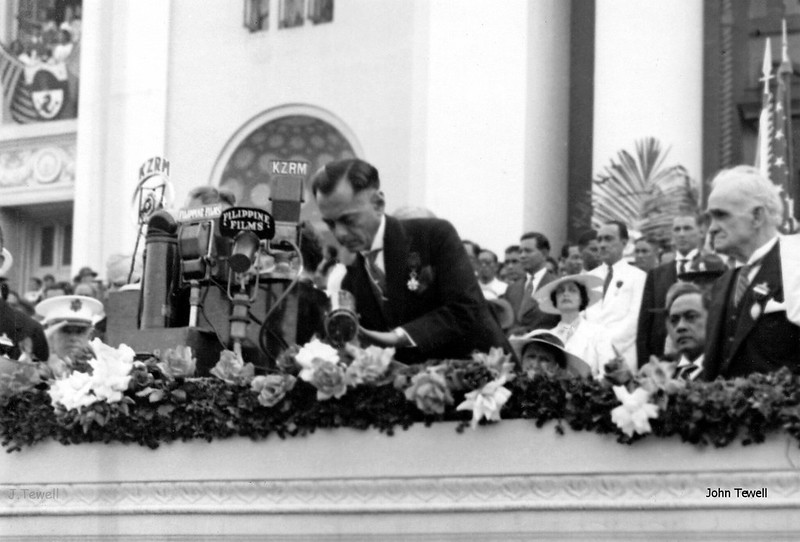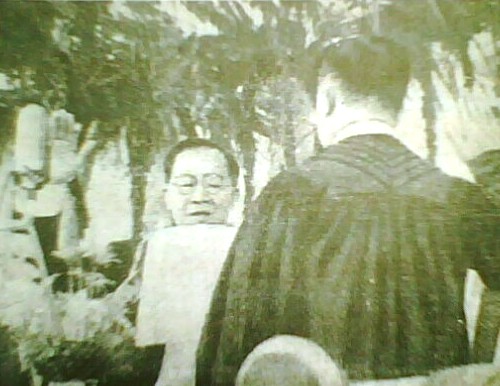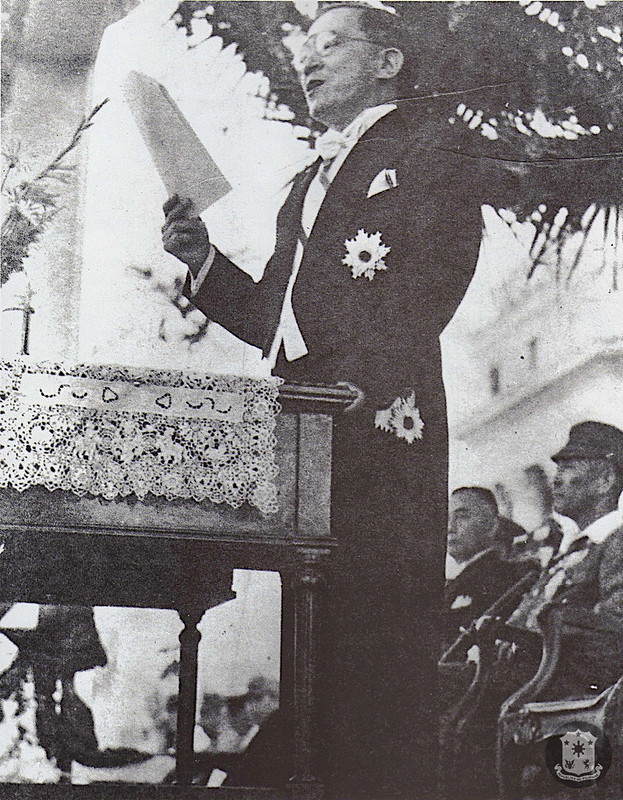Weight of history looms large at the National Museum for inauguration of Marcos Jr.
The imposing weight of history is set to serve as the backdrop for the inauguration of Ferdinand “Bongbong” Marcos Jr. as the country’s 17th president at the National Museum of Fine Arts (NMFA) in Manila on June 30.
Once Marcos Jr. takes his oath of office at the NMFA, he will be the beneficiary of the comprehensive and wide-ranging development of the National Museum of the Philippines (NMP) since the turn of the 21st century.
The NMFA on Padre Burgos Street is part of the NMP complex that also includes on Agrifina Circle nearby the National Museum of Anthropology (NMA) and National Museum of Natural History (NMNH).
The NMFA used to be the legislative building or the Congress of the Philippines. One of the architects of the original neoclassic edifice was Juan M. Arellano.
Marcos Jr will be the fourth president to be inaugurated there, after Manuel L. Quezon (1935), Jose P. Laurel (1943), and Manuel A. Roxas (1946).
During the war, the building was used to safeguard the national collection.
Sadly the national collection was destroyed during the Battle of Manila in 1945. The Japanese had transformed the building into their stronghold, so the building became the target of bombardment by American forces.
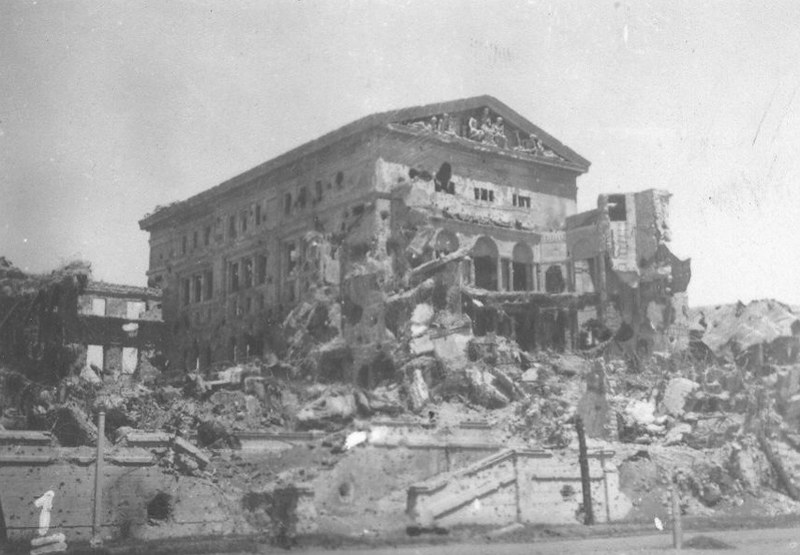
The Legislative Building in ruins after the war in 1945. The middle edifice of the building, the Session Hall, was the only structure standing. Presidential Museum and Library PH
After the war, the Natural History Museum Division was merged with the Fine Arts Division of the National Library. This arrangement later became the modern National Museum.
When Marcos Jr.’s father, President Ferdinand Marcos, declared martial law in 1972, the legislative building was closed.
It later became the “Executive House” of the prime minister under the 1973 Constitution.
After the Edsa Revolution in 1986 and the restoration of the Congress of the Philippines in 1987, the building became the restored Senate or upper legislative chamber while continuing to house the NMP.
The Senate later moved out to the Government Service Insurance Service complex at the Cultural Center of the Philippines complex.

Restoration
The building on Padre Burgos was rehabilitated and restored to become the NMFA. Nearby, the Departments of Finance and Tourism moved out of Agrifina Circle and the neoclassic buildings they had left behind were restored and remade to house the NMA and NMNH, respectively.
The NMFA showcases, while also conserving, the national collection of fine arts, which includes the “Spoliarium” by Juan V. Luna.
Contrary to common belief, the “Spoliarium” was not in Philippine hands before the war (which was a blessing since it thus escaped the destruction of the national collection during the Battle of Manila). It came from Spain and was gifted to the Philippines in 1958 by Generalissimo Francisco Franco.
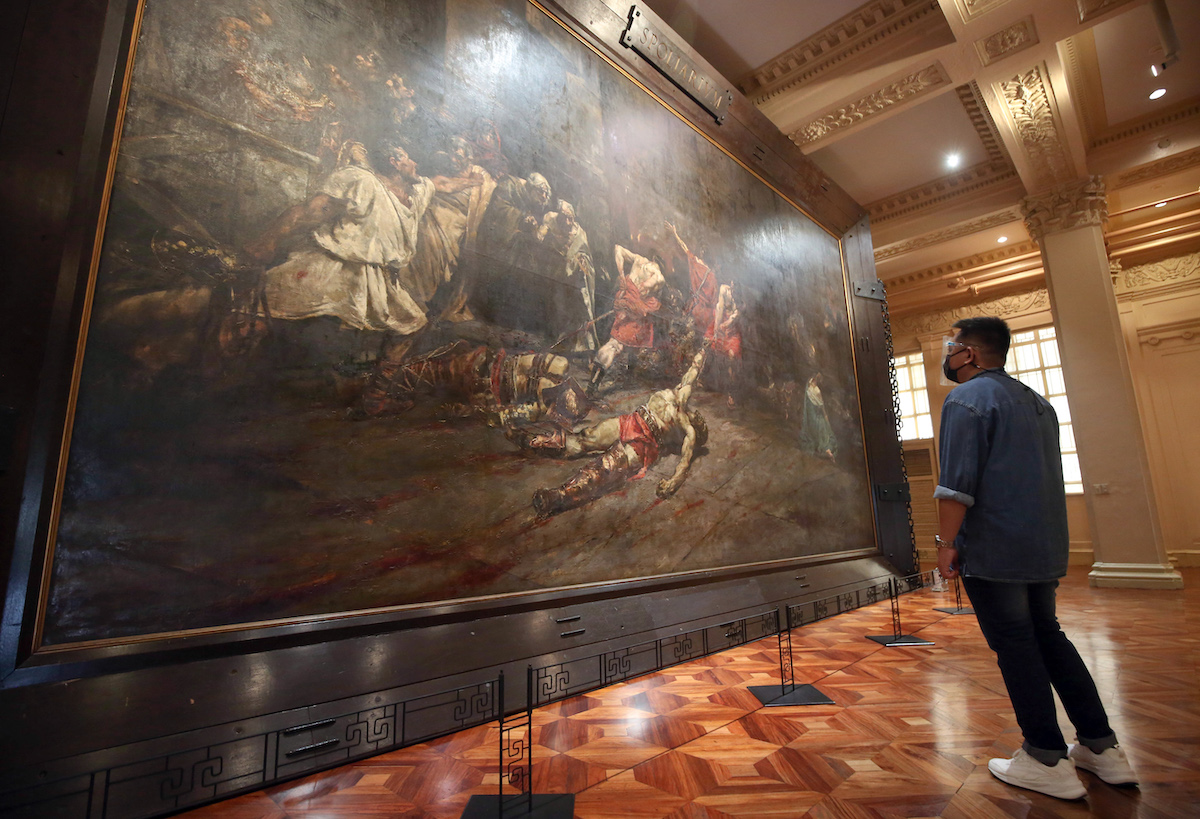
A tourist looks at the ‘Spoliarium’ at the National Museum of Fine Arts in Oct. 2021. KJ Rosales / The Philippine STAR
Although it is now the NMFA, the old Senate Hall has been restored and the familiar statues of Presidents Quezon and Sergio Osmena Sr., who were the premier legislators of their time before they assumed the presidency of the Philippine Commonwealth one after the other, continue to flank the entrance.
Developmental woes
The NMP complex was a sustained work, or struggle, since the 1990s, according to multi-awarded dramatist and writer, top anthropologist, and former NMP Director III Jesus T. Peralta.
In an interview with PhilSTAR L!fe, Peralta, who served as NMP director from 1992 to 1997, said the two chief problems confronting the development of the NMP were inadequate budget and the lack of professionals and trained technicians.
It is only a venue but with more cultural value, second only to Luneta.
“The budget of the National Museum was rigid and inadequate,” Peralta explained. “The annual allocations could not adequately respond to nuances of discoveries with budgetary requirements that were not predictable.”
“We had to resort to the private sector for assistance,” Peralta added. This led to the establishment of the National Museum Foundation and other local foundations with the help of private friends and benefactors.

Former National Museum director Jesus Peralta is also a multi-awarded playwright, anthropologist, poet, painter, and essayist. The Varsitarian
“The Anthropology Division then was the darling of Manila society due to its meaningful discoveries in archaeology, Philippine prehistory, local culture and ethnography,” Peralta recalled. “The private sector was more than generous in responding. We could just pick up a phone then and ask for what we needed, followed it up with a formal letter, and we got what we wanted, Also, we rigidly liquidated expenditures and returned excess funds.”
Although then as now, he was the country’s foremost anthropologist (he acquired his philosophy degree from the old Faculty of Philosophy and Letters of the University of Santo Tomas and a Ph.D. in Anthropology from the University of California, Davis Campus), Peralta as NMP director said he didn’t concern himself alone with the anthropology division but with “the entire National Museum.”
“Collection is a consequence of research, it takes place when one does research,” he explained. “To improve collection, one must improve research. That is what we did.”

Be that as it may, Peralta admitted the national collection isn’t adequate.
“The National Museum does not have an adequate collection representative of Philippine anthropological cultural diversity,” he said. “There are at least 80-plus ethnolinguistic groups with over 400 named subgroups in this country. The collection covers only a minor part of this. I do not have in my hands the records, but I think, less than 20 groups (are represented).”
Top 3 artifacts
Despite the spots, Peralta declared there’s no such thing as a strong or a weak spot in a national collection. “Each item collected is representative of a cultural fact, and facts have proven value, one just as important as the other,” he explained.
Asked the best items in the national collection, Peralta identified three but “merely for their public-interest value.”
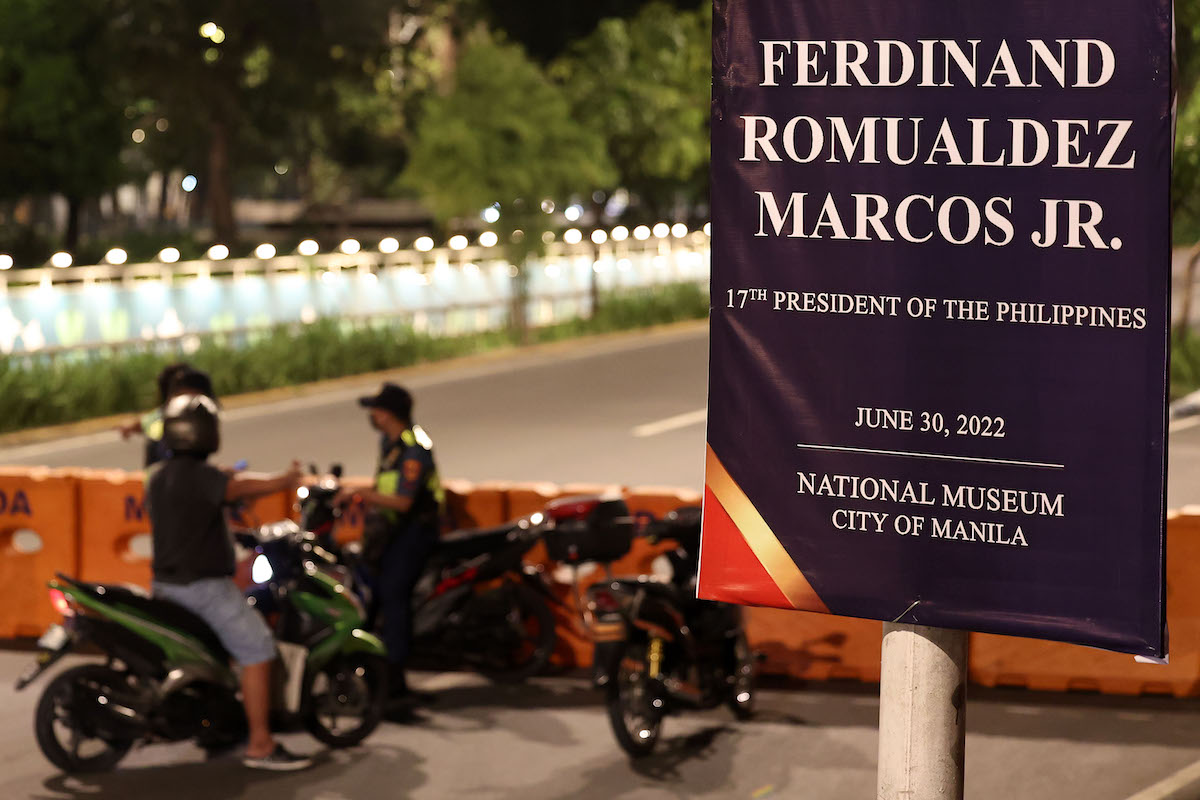
Traffic and police personnel man various entry points following the closure of the roads leading to the National Museum of Fine Arts in preparation for the inauguration of President-elect Ferdinand "Bongbong" Marcos Jr. on June 30. Miguel de Guzman / The Philippine STAR
“First,” he said, “would be the two chert flake tools collected from the Manga Site in Andarayan (in Cauayan, Isabela) dated to .9 million years, evidence the earliest presence of hominid in the Philippines.
“Second would be the Tabon Skull Cap from Palawan; it was the first evidence of the presence of modern man in the country such that it caught the attention of the public. There are later and older finds but it was the first.
“And third would be the Laguna Copper Plate, 10th CE; it is the earliest written document found here, a legal document, and explained many historical/prehistorical facts, e.g. the Islamic burials in the 12th CE in Santa Ana, Manila, the prehistory and early history of ancient Islamic Maynila, and that it did not exist prior to the 15h CE, etc.”
Asked his thoughts about the inauguration of Ferdinand Marcos, Jr. at the National Museum, Peralta replied, “It is only a venue but with more cultural value, second only to Luneta.”
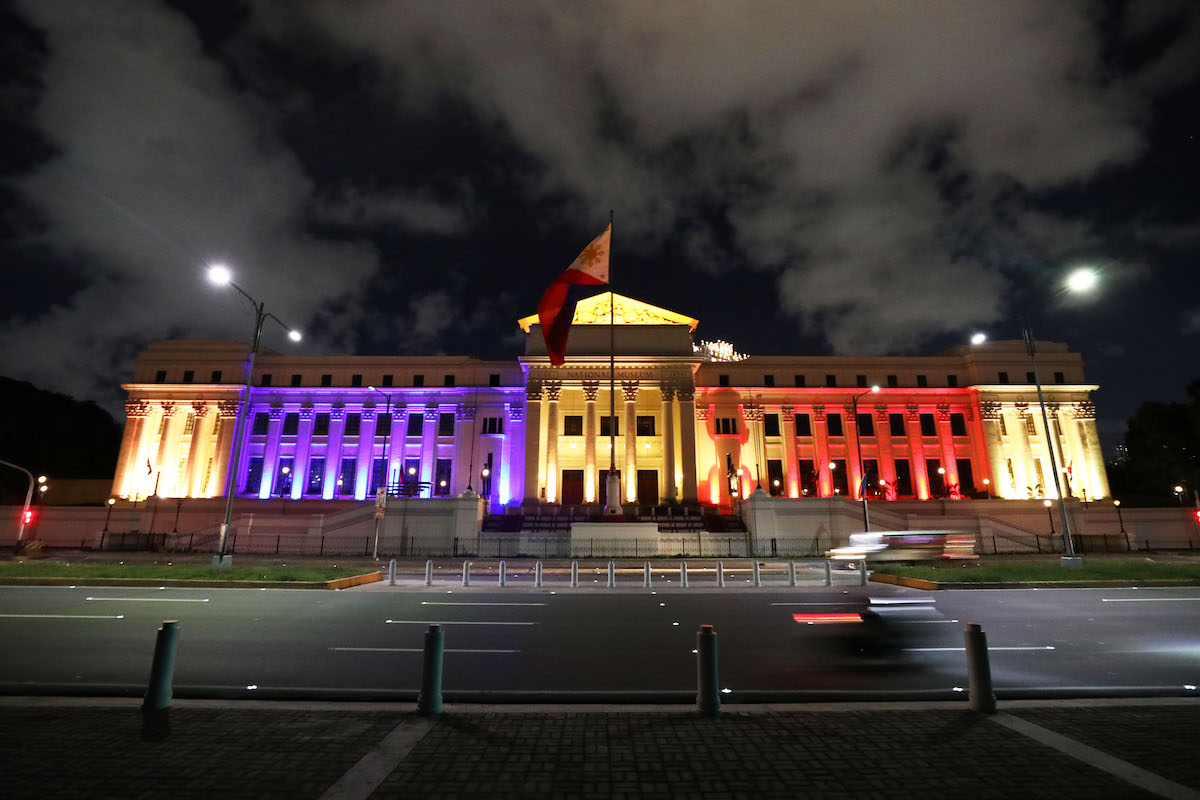
The facade of the National Museum of the Philippines lit up with the colors of the Philippine flag on June 2 as part of their commemoration of flag week and the 124th Philippine Independence Day. Miguel de Guzman / The Philippine STAR



